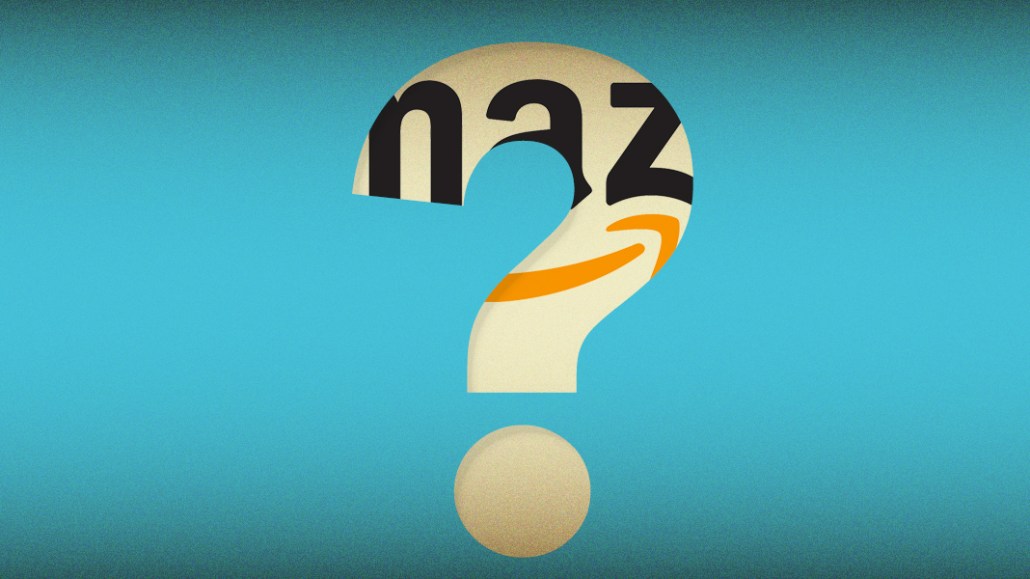
WPP, Publicis and Omnicom are looking to spend more than $800 million combined on Amazon advertising next year, while Amazon is improving its advertising products and hiring sales people to cater to agencies’ needs. But Amazon’s rapid advertising growth comes with much confusion surrounding the often talked-about Amazon Media Group, Amazon Marketing Services and Amazon Advertising Platform.
“We are in the midst of this great codification of Amazon’s advertising offerings, so each of these acronyms add to the frustration,” said James Thomson, partner of Amazon consultancy Buy Box Experts.
For starters, AMG is not an ad product but rather Amazon’s in-house team that sells ad products, while AMS and AAP are two distinct ad offerings: One is paid search, and the other is programmatic buying. Below is an explainer, based on conversations with agency executives and people familiar with Amazon’s ad business.
AMG
AMG sells Amazon’s ad products and works closely with agencies and companies to help them better use those ad formats, including direct display, video ads and custom ad units, across Amazon owned-and-operated properties like Amazon.com, IMDb, Digital Photography Review and Kindle.
“Direct display and custom solutions are always managed services, and we work with all types of advertisers. This includes brands that sell products on Amazon, and those that don’t,” said an Amazon spokesperson.
Thomson added that AMG has also built internal tools like an ad server to manage display media. “Today, AMG also has the broader A9 ad network that goes out and header bids against companies like Google for the top comScore 1,000-plus site inventory,” said Thomson. “AMG now has a broader network to sell.”
Todd Silverstein, U.S. head of performance marketing for Edelman, believes AMG’s ad offerings are a pure brand awareness play, as it has been hard to prove their value in driving e-commerce sales. “But AMG has succeeded in creating awareness around complimentary products,” he said.
AMS
AMS is a self-serve pay-per-click performance marketing suite that offers three search ad formats — sponsored products, headline search ads and product display ads — as well as Amazon Stores that let brand owners create their “in-store” experience on Amazon, with features like customizable templates and a brand-specific Amazon URL, according to the Amazon spokesperson.
Many advertisers see AMS as a paid search tool like Google AdWords, but there are many differences. For instance, with AMS, ad rankings are largely determined by product popularity and sales, rather than advertiser optimization, said Silverstein.
AMS is only available for brands that sell on Amazon, and ad placements appear only on Amazon.
AAP
AAP is a programmatic solution, or Amazon’s own demand-side platform. AAP is the only way advertisers can reach Amazon’s audience segments off of Amazon owned-and-operated properties. With AAP, advertisers can either work with an Amazon account team to plan and execute their ad campaigns, or they can do programmatic buying on their own through a self-serve platform that Amazon introduced in 2014.
Since access to AAP requires an AMS login, Thomson considers AAP as an enabled permission within an agency AMS account rather than a standalone platform.
“[AAP] is a bit of a misnomer as its own ‘platform,’” he said. “I think we see AAP get rolled into AMS. Since AMS is its own platform that seems to be parenting this offering, I wonder if having ‘platform’ in the title under the broader umbrella of AMS ultimately makes sense.”
Both companies that sell products on Amazon and those that don’t use AAP.
The future
Both Thomson and Eric Heller, CEO for Amazon consultancy Marketplace Ignition, believe as Amazon becomes more mature and sophisticated in advertising, it will consolidate its existing ad offerings into one single platform and make the platform equally accessible to both first-party sellers and third-party sellers. After all, third-party sellers can already use AMS sponsored products and headline search ads, which used to only be available to first-party sellers, according to Heller.
“Amazon is working to make all effective platforms available to all paths to the customer,” said Heller. “Past history with programs like [content marketing program] Amazon A+, which used to only be available to brands and is now available to third-party sellers, demonstrates that Amazon sees these as effective ways to drive sales for both channels.”
Subscribe to the Digiday Retail Briefing: A weekly email with news, analysis and research covering the modernization of retail and e-commerce.
More in Marketing

Pandora is betting on AI agents to scale service and emotional selling during the peak holiday season
Pandora is using AI agents to scale customer service and replicate emotional in-store selling online, just as peak season puts pressure on margins and teams.

Rembrand’s CEO wants to grow virtual ad placements in streaming, and he’s looking elsewhere for models
Omar Tawakol wants to improve advertising within the streaming world, and is working with advertisers and publishers to improve that experience.

Marketers are keen to use generative AI in ad campaigns, but hidden costs lurk
Marketers across the industry want to use AI to cut down on time spent in creative production. It’s not so simple in practice.





